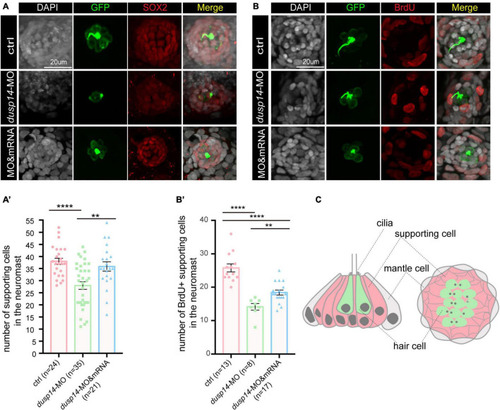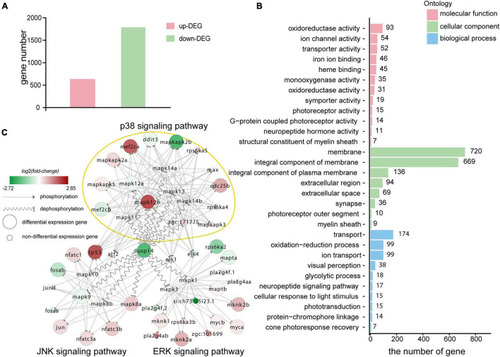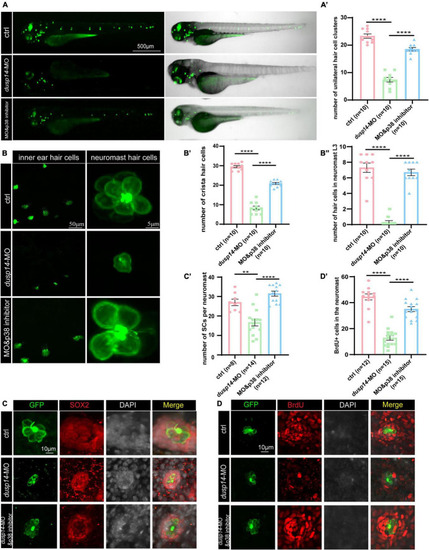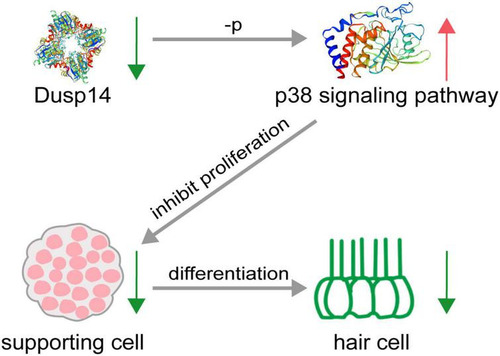- Title
-
Dual-Specificity Phosphatase 14 Regulates Zebrafish Hair Cell Formation Through Activation of p38 Signaling Pathway
- Authors
- Wei, G., Zhang, X., Cai, C., Sheng, J., Xu, M., Wang, C., Gu, Q., Guo, C., Chen, F., Liu, D., Qian, F.
- Source
- Full text @ Front. Cell. Neurosci.
|
The phylogenetic and expression analysis of zebrafish EXPRESSION / LABELING:
|
|
Figure 2. Knockdown of dusp14 gene affects the hearing-related behavioral response in zebrafish. (A) Working diagram of acoustic or vibrational startle test after dusp14-MO injection at 5 dpf. (B) The distance moved of zebrafish within 1 s after the percussion stimulation. (C) Statistics of the moving rate of zebrafish during the total test. (D) The schematic diagram shows the startle response testing equipment. (E) The swimming trajectory of the control, dusp14 morphants and dusp14-mRNA and MO. (F,G) Swimming distance and peak velocity of zebrafish larvae at 5 dpf that reflected the auditory function of zebrafish larvae by examining the startle response. Values with **** above the bars are significantly different (P < 0.0001), ns means no significance. PHENOTYPE:
|
|
Knockdown EXPRESSION / LABELING:
PHENOTYPE:
|
|
Knockdown of the dusp14 gene reduces the number of supporting cells and proliferation of supporting cells. EXPRESSION / LABELING:
PHENOTYPE:
|
|
Transcriptomic sequencing data revealed p38 signaling pathways may responsible for regulation of dusp14 gene on hearing function. |
|
p38 signaling pathway is involved in dusp14 regulation of inner ear hearing in zebrafish. PHENOTYPE:
|
|
Schematic diagram of hair cell reduction caused by |







